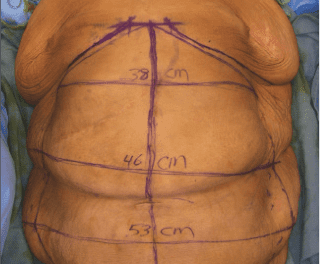3/10/08
Unlike females, men are not as concerned about scar placement, a defined waistline, or buttock shaping.
Postbariatric surgery was developed with women in mind—that they would regain some semblance of the female form after massive weight loss, multiple pregnancies, or genetic lipodystrophies.
Recent statistics on postbariatric surgery from 2006 compiled by the American Society of Plastic Surgeons shows that approximately 3,500 postbariatric procedures were performed on males, including buttock lift, lower body lift, thigh lift, upper arm lift, breast lift, and extended abdominoplasty.
Compare this to approximately 64,000 procedures performed on females during the same period.
In addition, of the estimated 200,000 gastric bypass procedures that will be performed in the United States this year, only an estimated 15% (or roughly 30,000) will involve male patients.
The notably smaller percentage of male postbariatric patients—as well as male gastric bypass patients—is fairly easy to explain: overall, males are not as body-image conscious as females. Also, society tends to be more accepting of an abnormal male body habitus.



